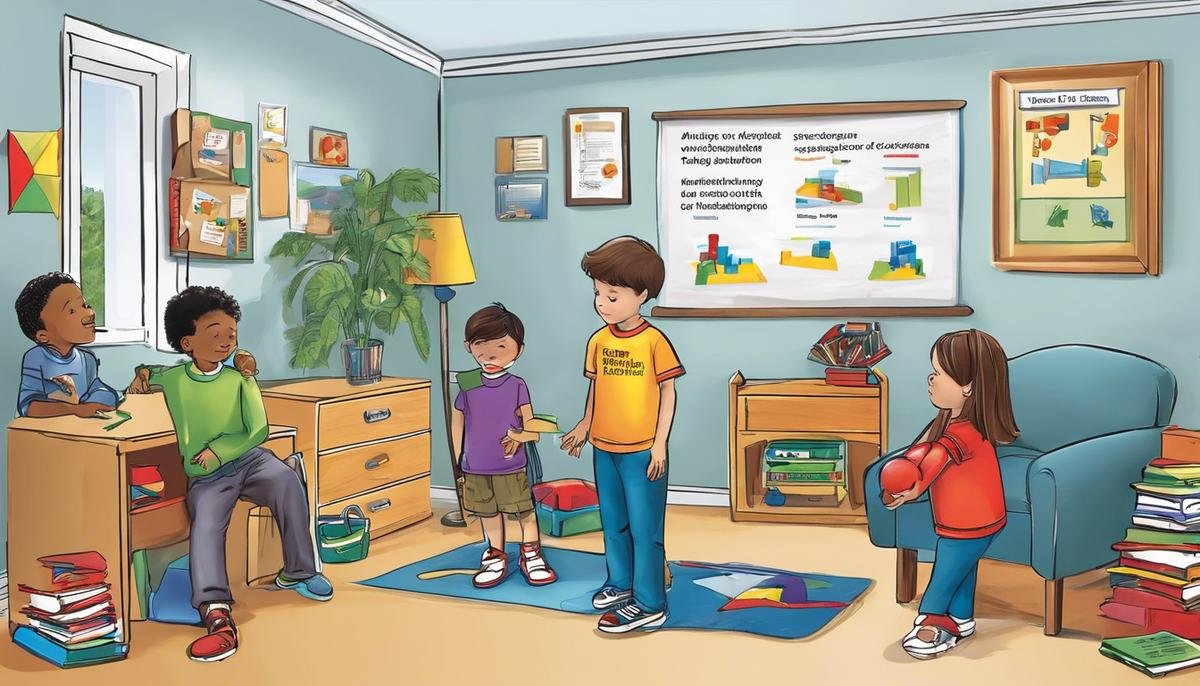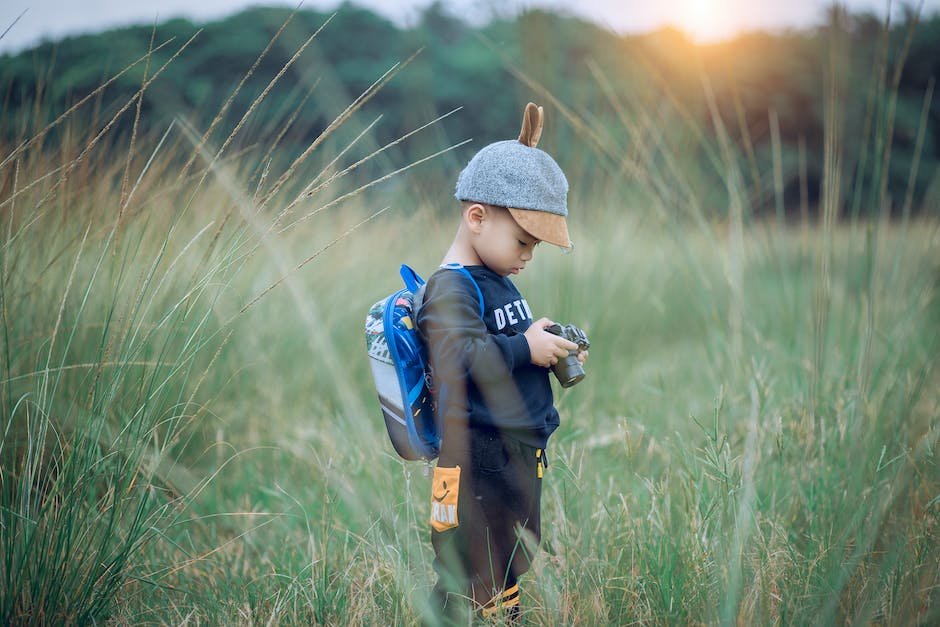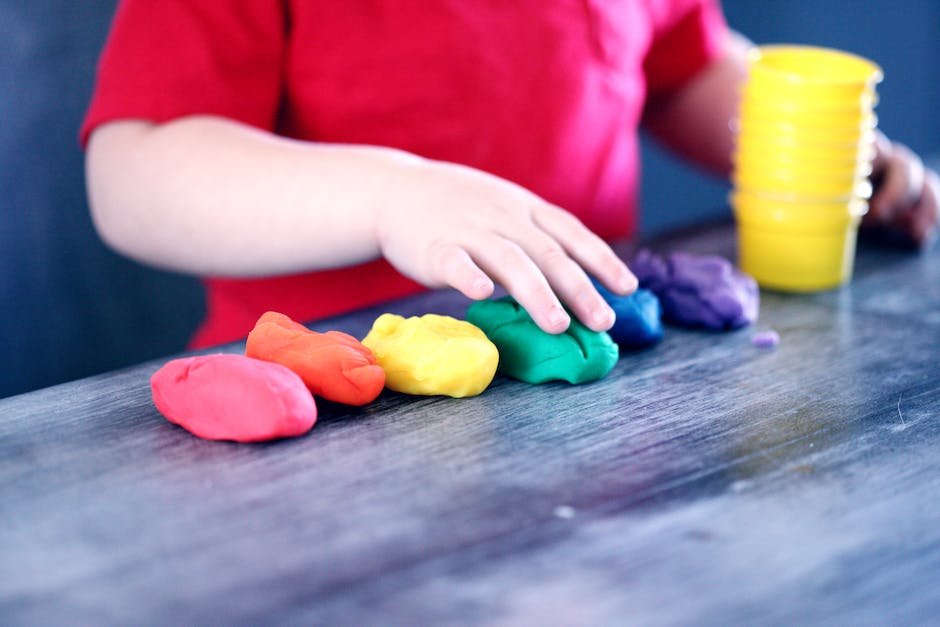
Aggression in individuals with autism spectrum disorder (ASD) presents unique challenges that extend beyond common misconceptions and surface-level behaviors. At its heart, such aggression is often a byproduct of a complex interplay between internal factors, like sensory sensitivities and communication barriers, and external influences, such as environmental stressors. This article seeks to unravel the underpinnings of these aggressive outbursts and provide a map for navigating the terrain of behavioral interventions. By taking a closer look at the roots of aggression in children with autism, we aim to equip readers with a deeper understanding and actionable knowledge to approach these behaviors not just with reactive strategies, but with preventive and supportive measures tailored to individual needs.
Understanding Autism and Aggression
Navigating Through the Storm: Understanding Aggressive Behavior in Children with Autism
When it comes to parenting a child with autism, there’s a canvas of experiences that paints a unique family dynamic. As a world built on patience and understanding, it’s a journey that brims with challenges, and among those, aggressive behavior in some children with autism is a particular trial many families face.
First off, it’s crucial to acknowledge that aggression isn’t a ‘one-size-fits-all’ issue, nor is it a reflection of parenting skills. Children with autism may display aggressive behavior for a myriad of reasons that are often rooted in their attempts to navigate a world that feels overwhelming to their senses and psyche.
One of the main reasons children with autism might show aggression is due to communication barriers. Imagine being in a foreign country, unable to speak the language or understand others. That sheer frustration is a daily reality for many autistic children who struggle to express their needs or discomforts. When words fall short, they might resort to aggression as an alternative form of communication.
Sensory overload is another significant factor. Picture a typical household bustling with activity – the hum of the dishwasher, the scent of dinner cooking, siblings bickering over a video game. Now, magnify those stimuli tenfold, and you’d get a glimpse of what a sensory sensitive child experiences. Such overwhelming stimulation can lead to a fight-or-flight response, where aggression is a call for help or a plea for the sensory chaos to stop.
Routine and predictability are the bedrocks upon which many children with autism build their sense of security. When there’s a deviation from the norm – a surprise visitor or a cancelled trip to the park – they might be unable to cope with the change, thus resorting to aggression as a coping mechanism.
It’s also important to look beyond the immediate outburst and consider underlying medical issues. Just like anyone else, children with autism can experience discomfort from ailments but may have trouble identifying and communicating their pain. A seemingly unprovoked aggressive episode might, in fact, be their reaction to a painful ear infection or an itchy rash.
Conveying empathy, maintaining a structured environment, and working with professionals to create a personalized behavior plan can be instrumental in managing and understanding aggressive behaviors. Encouraging non-verbal communication tools, offering sensory-friendly safe spaces, and remaining consistent with routines are some steps that can help these children deal with their complex world.
Remember, each child with autism has their own set of unique triggers and responses. Navigating through their moments of aggression requires a tailored approach, a generous dose of empathy, and a community that stands together in both support and understanding.

Assessment and Individualized Behavior Plans
Having covered the foundational understanding of what may lead to aggressive behaviors in children with autism, it’s time to dive into the proactive side of things—using assessments to design effective behavioral interventions.
When it comes to assessments, these can be a golden key in unlocking the door to a more peaceful and positive home environment. Think of an assessment as a detailed map of your child’s specific needs and responses. It’s a tool that helps identify not only the “what” but also the “why” behind challenging behaviors.
So, how exactly can this map lead to effective behavior interventions? It comes down to individualizing the approach. Because each child’s autism is as unique as a fingerprint, it’s crucial to have a tailored intervention plan. By systematically observing behavior and taking detailed notes, caregivers are better able to share useful information with professionals.
Behavior assessments often involve looking at the ABCs—an acronym that stands for Antecedent, Behavior, and Consequence. What happens before the behavior (Antecedent), what the behavior looks like (Behavior), and what happens after (Consequence) can all offer clues for intervention strategies.
And let’s address the elephant in the room—yes, assessments take time and sometimes that feels like a luxury that families don’t have. However, investing time upfront can actually save energy in the long run and lead to a more harmonious home life.
Once armed with the insights from these assessments, it’s possible to design interventions with a laser focus. This might involve altering the environment to reduce sensory triggers or teaching alternative communication skills so that frustration doesn’t build into aggression.
Moreover, interventions derived from assessments can guide in nurturing desirable behaviors through positive reinforcement. For instance, if a child learns that asking for a break leads to a desirable outcome—like time with a favorite toy or a quiet space to decompress—they are more likely to adopt this as a new coping mechanism, in place of aggressive behavior.
Let’s also talk about skills-building interventions, like social stories, which help children understand social cues and appropriate responses, or applied behavior analysis (ABA), which breaks down learning into smaller, manageable chunks.
The heart of effective behavioral interventions lies in understanding that behavior is a form of communication. Listening to this form of communication, decoding it through assessment, and responding with carefully considered interventions can open a world of difference for families.
Remember, it takes a village, and finding a network—be it online communities, local support groups, or educational professionals—who understands the journey is crucial. Share experiences and strategies, because what works for one family might just be the solution another has been searching for.
In summary, as you navigate this incredibly personal and sometimes challenging experience, assessments are a trusted compass. With them, creating effective behavioral interventions offers a more joyful, less stressful family life, where understanding leads to growth, connection, and healing.

Key Strategies for Behavior Intervention
Practical approaches to dealing with aggression in autism encompass a diverse range of strategies that require patience, consistency, and often a touch of creativity. After all, every child is a tapestry of individual traits and nuances.
Firstly, let’s talk about the safe space tactic. Just like a snuggly blanket on a chilly day, having a designated calm zone in the home can be incredibly comforting for a child with autism experiencing overwhelming feelings. Equip this area with soothing sensory inputs like soft textures, gentle lighting, and perhaps a favorite toy or two.
Positive behavior strategies come into play here as well. For example, the use of social scripts can be golden in guiding children on how to express their needs or frustrations without resorting to aggression. Picture boards or tech devices with speech-generating software can offer alternative communication methods, making a world of difference.
Let’s not forget the magic of modeling behavior. Demonstrating how to handle emotions and conflict can give kids a live-action tutorial in managing their reactions. Casually practicing these scenarios during peaceful times can prepare them for the rough-and-tumble moments.
Moreover, the art of distraction and redirection shouldn’t be underestimated. Finding an activity that captivates your child’s attention can swiftly shift gears away from the buildup of aggressive behaviors. Whether it’s a puzzle, a quick game, or a hands-on craft, having these go-to options can be an ace up the sleeve.
Collaboration with schools and therapists is vital in aligning strategies across different environments. Sharing insights and successful methodologies ensures consistency, a key ingredient for progress.
And let’s talk about understanding the unmet needs. Like piecing together a puzzle, fishing out underlying issues, from hunger to a need for attention, can be pivotal. Identifying and addressing these hidden drivers can preempt many instances of aggression.
When moments of aggression do occur, a methodology known as “the three Rs” – Reflect, Reason, and Repair, can be a nurturing approach to processing these episodes. Reflect on what happened, reason through it together when calm, and repair any emotional stress or misunderstandings that arose.
Lastly, self-care shouldn’t be a foreign concept. Juggling the ups and downs can be taxing, so it’s okay to tag-team with trusted family or friends, giving one another a chance to recharge and return to parenting duties with renewed energy and perspective.
By weaving together these practices, it becomes possible to navigate aggression in autism with compassion and effectiveness, fostering an environment where a child can thrive. Remember that this journey is often a marathon, not a sprint, and celebrating the small victories can provide strength and encouragement for the long run. Here’s to nurturing beautiful minds with love and perseverance!

Incorporating Positive Reinforcement
At the heart of parenting a child on the autism spectrum lies a fundamental approach that can truly change the game: positive reinforcement. It’s a concept that touches not just on behavior management, but on bolstering self-esteem and encouraging personal growth for our kiddos. After all, autism doesn’t come with a manual—but boy, does positive reinforcement serve as a trusty guide!
So, why is positive reinforcement so critical in behavioral plans? Well, it all starts with the idea that every child has the potential to learn and develop skills that can enhance their daily lives. Positive reinforcement focuses on what a child is doing right, celebrating their successes, no matter how small. This affirmative approach motivates them to keep trying and, more importantly, to keep succeeding.
Now, positive reinforcement isn’t about empty praise; it’s a structured method that involves recognizing and rewarding desired behaviors immediately and consistently. A thumbs-up for taking turns, a high-five after trying new foods, or a favorite activity after completing homework can make a world of difference. This practice helps a child with autism understand and feel good about the connection between their behavior and the outcome.
The key is consistency. Just like any good habit, reinforcement works best when it’s a regular part of our routine. And, yes, there will be days when nothing seems to go right—but stay the course. Over time, trust builds, behaviors improve, and smiles abound.
Moreover, positive reinforcement doesn’t stand alone. Incorporating this approach doesn’t mean ignoring instances when intervention is necessary due to challenging behaviors. Instead, it’s about addressing those behaviors while emphasizing and reinforcing the positive. Imagine it like a garden: we pull the weeds, sure, but we spend more time watering the flowers.
And let’s not forget the ripple effect of positive reinforcement on family life. As behaviors improve and self-esteem grows, there’s a positive shift in family dynamics. The home environment becomes more peaceful and nurturing, making it a safe harbor for everyone.
In short, positive reinforcement is the warm sunlight in the garden of behavioral growth. It nourishes, supports, and encourages our children to blossom into their unique selves. Through it, we’re not just managing behavior—we’re gently guiding our children toward a bright future that celebrates their every achievement.

The Role of Environment in Behavior Management
Creating a Nurturing Habitat: How Environment Shapes Behavior in Children with Autism
Navigating the waters of parenting is a journey of learning and love, especially when charting the course for a child with autism. While many strategies have been explored when it comes to managing aggressive behavior in children with autism, the impact of the environment often takes center stage. It is an undeniable force, shaping and molding behaviors, creating a ripple effect in a child’s day-to-day interactions.
First, consider the power of visual stimuli in the home and learning environments. Bright, contrasting colors and patterns might be aesthetically pleasing, but for a child with autism, such vibrancy can be overwhelming, leading to agitation or aggressive responses as a bid to communicate discomfort. Opting for calming, neutral tones and minimizing clutter creates a serene atmosphere which can greatly reduce stress for sensitive children.
Equally important is auditory input. From the hum of household appliances to the chatter of siblings, sounds contribute to the environment’s ambiance. When these sounds become unpredictable or too intense, it’s not unusual for children with autism to express their heightened anxiety through aggression. Creating a calm auditory environment with predictable, soft background noises or offering noise-canceling headphones can help.
The physical arrangement of spaces also matters. Furniture placement should allow for ease of movement and clearly defined spaces can provide a sense of security and order. Children with autism thrive in spaces that are predictable and free from unnecessary physical obstacles that could provoke stress or frustration.
Furthermore, incorporating elements of nature into the home setting, through plants or water features, can have a calming effect on children and adults alike. These touches of tranquility help to foster an environment that is conducive to gentle behavior and emotional regulation.
Technology, too, plays a role. While devices can be educational and entertaining, screen time should be monitored as it can quickly become a source of overstimulation. Establishing tech-free zones and times encourages children to engage with their environment and loved ones, building social skills that are crucial for mitigating aggressive tendencies.
Community environments are just as vital. Playgrounds, libraries, and other public spaces that are designed with the needs of children with autism in mind, featuring low-sensory areas and inclusive activities, support positive interactions and help in reducing instances of aggressive behavior that stem from environment-induced stress.
Lastly, consider the social environment. The way in which family members, peers, and educators interact with a child with autism can greatly influence their behavior. Patience, understanding, and gentle guidance without judgment or frustration create a positive social atmosphere that not only discourages aggression but also encourages trust and communication.
In essence, the environment is a tapestry of elements, each thread woven together to either calm or confuse, to soothe or to stimulate. By mindfully crafting environments that cater to the sensitivities of children with autism, there is a profound opportunity to encourage peaceful, productive, and joyous behaviors. This thoughtfully constructed world is not just about minimizing aggression; it’s about proactively creating a nurturing space for growth, learning, and happiness that every child deserves. Let’s cherish every step of this beautiful journey.

Support for Families and Caregivers
When it comes to supporting families and caregivers managing aggression in children with autism, enabling resilience is a pivotal aspect that demands our attention. Resilience isn’t just about bouncing back from challenges; it’s about growing, learning, and thriving despite them. So, let’s talk about building blocks that can foster this resilience in both our children and ourselves as caregivers.
First off, let’s address professional guidance and continuing education. It takes a village to raise a child, and in this digital age, the village can include online support groups, webinars, and tailored educational programs. Thirst for knowledge never fades, especially when it’s about arming oneself with the most innovative and effective methods to assist a child’s development. Caregivers need access to a wealth of resources that can educate them and, in turn, empower their children.
Navigating financial assistance programs is another territory where guidance is greatly appreciated. Medical expenses, therapeutic sessions, and specialized care can wear thin on the family budget. Insight into government or private financial support that can help cover these vital services lessens the economic burden and focuses the energy where it matters most – on the child.
Legal advocacy and understanding of rights are crucial, too. Caregivers often require support in comprehending the intricate educational laws and healthcare rights that impact their children. From Individualized Education Programs (IEPs) in schools to healthcare plans, navigating these arenas with confidence is essential.
Recognition and understanding of the caregiver’s emotional journey are undeniably necessary. Often the emotional strain on family members is overshadowed by the immediate needs of the child. Spaces to openly discuss and validate these feelings, without judgement, not only bring solace but also remind caregivers they aren’t alone on this journey.
Importantly, sustainable respite care options offer a lifeline. Respite care isn’t just “time off” – it’s an essential part of the caregiving ecosystem, allowing for rest and recovery, thereby preventing burnout. Reliable respite services enable caregivers to recharge, maintain their well-being, and uphold the quality of care their children deserve.
Lastly, accessible extracurricular activities designed for children with autism facilitate both learning and fun. These act as extensions of therapeutic interventions where children can apply social skills, physical coordination, and integrate sensory experiences in supportive, understanding environments.
In sum, a multifaceted support system that encompasses education, financial guidance, legal advocacy, emotional support, respite care, and inclusive activities, constitutes the village needed to nurture resilience among families and caregivers of children with autism. Creating environments that encourage peaceful, productive, and joyous behaviors extends beyond the home and into the larger society, translating into a more inclusive and understanding world for our children.

The journey toward effectively managing aggression in autism is a collaborative and dynamic process, one that requires ongoing learning, patience, and adaptability. Along this path, the steadfast goal remains to enhance the quality of life for individuals with autism and their loved ones. Understanding the intricacies of aggression within the context of autism is a vital step toward a more compassionate approach that honors the individual experiences of those affected. By fostering environments of support, deploying individualized interventions, and embracing the principles of positive reinforcement, we can look forward to a future where each child’s potential is nurtured and their challenges met with understanding and effective action.





